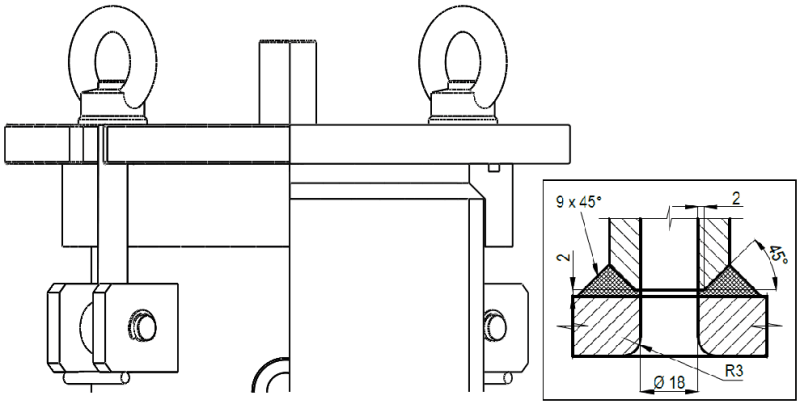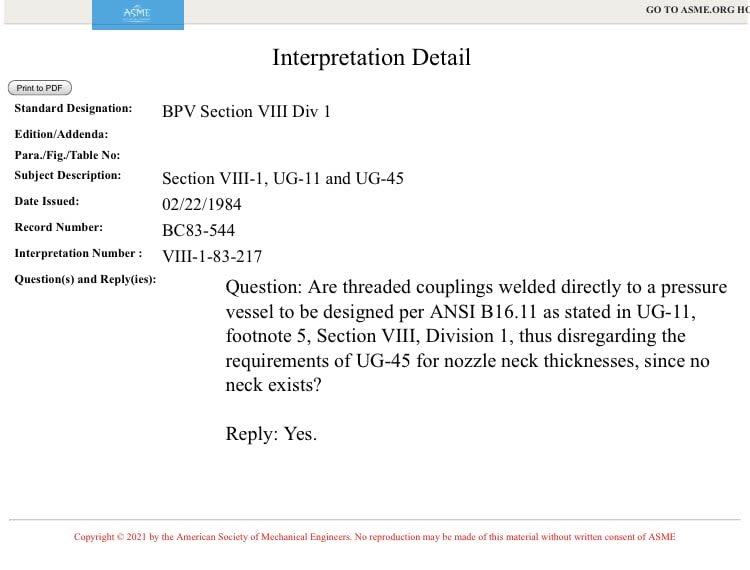Mr.blu
Mechanical
- Feb 12, 2022
- 19
I have seen many posts on the forum about this topic, but I haven't found one that really answers this question.
I will try to be as clear as possible: I have a flat cover that I designed according to UG-34 for a filter, which serves as a manway to change filter elements. If I place a threaded coupling on this cover to function as the equipment vent (it will not have external loads), should it comply with the requirements in UG-45, or would it fall under the 'manway opening'? The idea is to install a 1/2" NPT Class 3000 coupling, but its thickness, while meeting the required thickness + CA and UG-16, does not reach the value in the UG-45 table + CA. It is mainly to understand if a connection placed in a manway is still exempt from what is required in UG-45 when there are no external loads.
What does the code consider within 'manway and access only nozzles' if what I'm saying is incorrect? Is there any part of the code that specifies that UG-45 is aimed at reinforcing connections due to external stresses from piping? Many people express that opinion, but I haven't found it explicitly stated.
Thank you in advance to anyone who can help me interpret this
I will try to be as clear as possible: I have a flat cover that I designed according to UG-34 for a filter, which serves as a manway to change filter elements. If I place a threaded coupling on this cover to function as the equipment vent (it will not have external loads), should it comply with the requirements in UG-45, or would it fall under the 'manway opening'? The idea is to install a 1/2" NPT Class 3000 coupling, but its thickness, while meeting the required thickness + CA and UG-16, does not reach the value in the UG-45 table + CA. It is mainly to understand if a connection placed in a manway is still exempt from what is required in UG-45 when there are no external loads.
What does the code consider within 'manway and access only nozzles' if what I'm saying is incorrect? Is there any part of the code that specifies that UG-45 is aimed at reinforcing connections due to external stresses from piping? Many people express that opinion, but I haven't found it explicitly stated.
Thank you in advance to anyone who can help me interpret this


